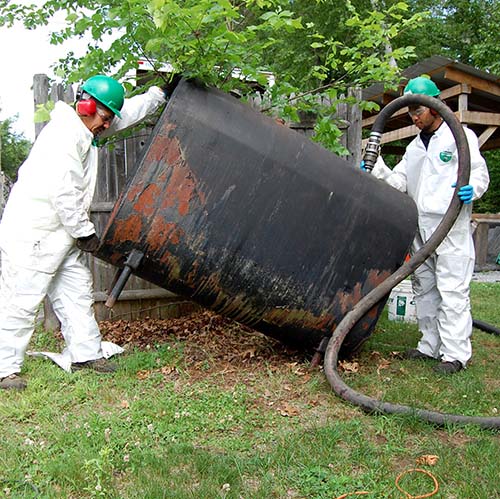How to Remove an Oil Tank
This article will cover the costs and permits for removing an oil tank, excavating the area where the tank is located, and purging the tank of uncontaminated fuel oil. You will also learn how to document the removal process. After the tank is removed, the area will need to be backfilled. You will need to have a soil sample analysis done by a certified laboratory. Often, a contractor will collect samples and deliver them to a lab for analysis. To protect yourself, take photos of the tank and have a contractor create a letter report documenting the tank removal. Often, homebuyers will require this type of proof when purchasing a property.
Costs of oil tank removal
While a typical 550-gallon underground oil tank removal Westchester County NY costs $1,400 to $2,200, it can be significantly higher. These costs are due to the labor, equipment, and soil remediation necessary to remove the tank. Land remediation may require lab testing to ensure the soil is safe for workers. And, of course, you will also have to pay for a permit to remove the oil tank. As you can see, the costs of oil tank removal are considerable.
The cost of oil tank removal depends on a few factors, including the size and location of the oil tank. Underground tanks require more work and labor, and larger tanks must be excavated safely. Additionally, costs vary depending on local pumping and disposal fees. Finally, the level of customer service offered by the oil tank removal company also plays a role in the price. Keep in mind that not all contractors charge the same amount for oil tank removal, so make sure you find a company that offers quality service at a fair price.
Permits required for oil tank removal
Removing an oil tank may require a permit, but the process itself isn’t particularly difficult. Most towns require that contractors obtain a permit before they can do the work. This is usually a one-time expense and will prove that the contractor is insured and registered. Permits are also crucial for insurance purposes, especially if the tank is located underground. Since oil tanks are a hazardous substance, insurance companies often lower premiums after the tank has been removed.
Before the removal process begins, permits are obtained from the building department and the state. In addition to obtaining the permit, you’ll need to get an affidavit stating that you have no electrical or plumbing work on the site. These permits are required for the cleanup of a leaking tank. Depending on the type of tank and its location, you may have to contact your local fire department to report the leaking tank.
Backfilling area excavated to access the tank
The material used to fill an area excavated to access an underground oil tank is called backfill. It is generally crushed stone sand or pea gravel. When the oil tank is underground, it needs to be protected from any leaks. Backfilling requires special preparations to avoid contamination, as well as ensuring proper airflow. The Environmental Protection Agency (EPA) has specific guidelines regarding the size and shape of the backfill. The EPA also prohibits using excavated materials as backfill.
A work zone shall include excavating the tank area, which shall be at least 10 feet from the tank’s surface. The contractor shall designate a Coastal Regulation Zones and the limits of the excavation area. These shall be clearly marked. Occupational Safety and Health Administration (OSHA) certification is required for people entering a confined space.
Purging the tank of uncontaminated fuel oil
If you want to get rid of hazardous vapors from your petroleum storage tanks, you should purge them first. Purging involves a process where the air is drawn into the tank and diluted. This process is essential because the lack of oxygen can lead to a dangerous environment. Using a flame screen and an inert gas containing less than 5% oxygen, you can purge your petroleum tanks effectively. After purging, you can clean them by wiping, squeegeeing, and removing any liquids that may have been collected.
Firstly, remove all fuel oil from the tank. It is important to ensure that the remaining fuel oil is recycled and reused. To do this, remove the tank gauge. Once this is done, a hose is connected to the explosion-proof transfer pump. This will feed the oil from the tank into a drum outside the vehicle. The remaining oil will be filtered and used for heating. This process can take up to several hours.




